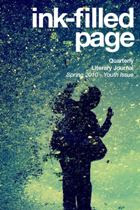When writing a technical or scientific piece, it is often necessary to use numerals to convey the data clearly to the reader. In most journalistic writing, the space on the page is given the highest priority. The style of the Associated Press dictates that journalists spell out both cardinal and ordinal numbers one through nine while suggesting that the writers use numerals in other cases.
A writer must strive for consistency and readability when dealing with numbers. The Chicago Manual of Style, fifteenth edition, offers wise words for writers struggling with proper usage. Chicago structures its conventions around one general rule: “whole numbers from one through one hundred, round numbers, and any number beginning a sentence” should be spelled out. Others should be written using numerals.
Two hundred and twenty-one rabbits were found living in the abandoned house.
Seventeen of the students were twenty-two-years old.
There were nearly two thousand people in the coliseum.
We’re going to party like it’s 1999!
I counted 3,397 bricks in the pathway of our neighborhood park.
The round numbers of Chicago are hundreds, thousands, millions, or higher round values. These round numbers should be spelled out. When a writer wishes to express a very large number (usually in the millions, billions, or higher), a combination of numerals and spelled out numbers is recommended for readability.
Recent research suggests that the Big Bang occurred around 13.3 and 13.9 billion years ago.
As of the 2000 census, there are an estimated 1.2 billion people living in Mainland China.
Simple fractions should be spelled out. Numbers involving whole numbers and fractions are often written in numerals, but may be spelled out if they are short. Percentages should always be written in numerals. As Chicago is quick to note, the word percent should be used in humanistic writings.
I finished writing two-thirds of my essay before falling asleep.
I woke up the next morning with 33 percent of my work left to do.
She took meticulous notes her 2½ x 4-inch index cards.
For more information on using numbers when dealing with money, please read Martha's tip.





No comments:
Post a Comment